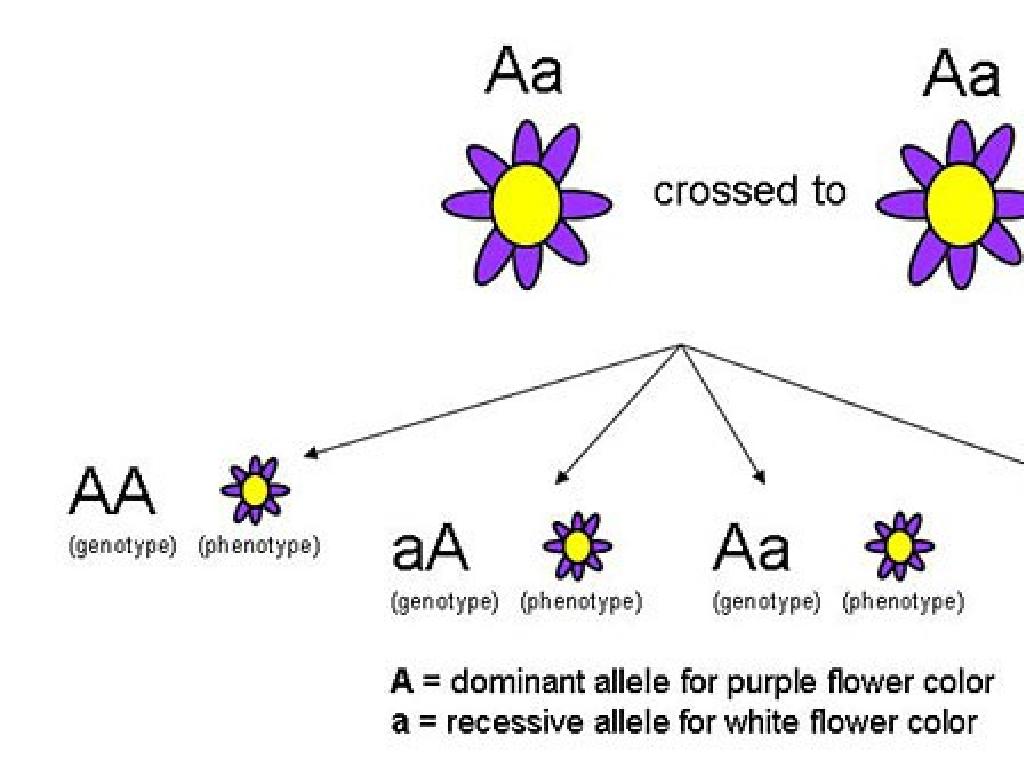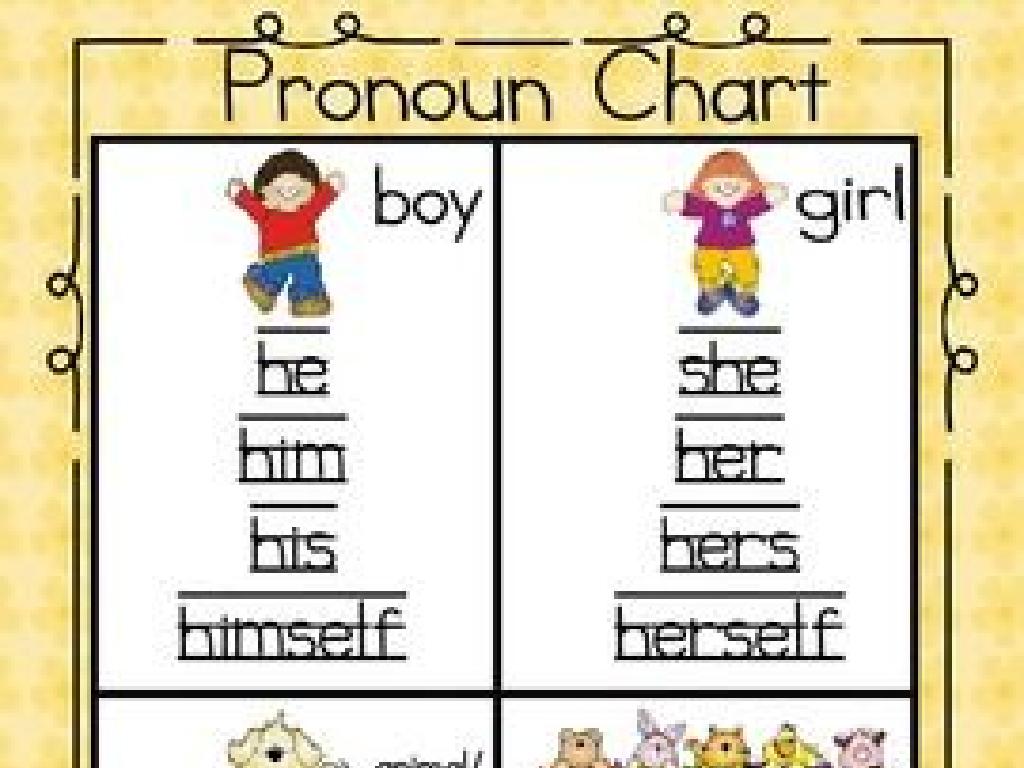Even Or Odd Numbers On Number Lines
Subject: Math
Grade: Second grade
Topic: Even And Odd
Summary: This engaging second-grade math lesson helps students recognize even and odd numbers using number lines. Learners discover even numbers end with 0, 2, 4, 6, or 8, while odd numbers end with 1, 3, 5, 7, or 9. Through interactive activities like group sorting and relay races, students practice identifying patterns, predicting sequences, and applying these concepts to everyday situations, building strong foundational number skills.
Please LOG IN to download the presentation. Access is available to registered users only.
View More Content
Welcome to Even and Odd Numbers!
– Greet and introduce the topic
– Define even and odd numbers
– Even numbers end with 0, 2, 4, 6, or 8. Odd numbers end with 1, 3, 5, 7, or 9.
– Explain importance of even/odd
– Knowing even/odd helps in grouping & sharing equally.
– Engage with a fun fact
– Did you know? Zero is an even number!
|
This slide is designed to welcome second-grade students to the concept of even and odd numbers. Start with a warm greeting and an introduction to the topic. Explain that even numbers can be divided by two without leaving any leftovers, and they end with 0, 2, 4, 6, or 8. Odd numbers, on the other hand, cannot be divided by two evenly and end with 1, 3, 5, 7, or 9. Emphasize the practical importance of distinguishing between even and odd numbers, such as when sharing or grouping items equally. Engage students with a fun fact about zero being an even number to spark their interest. The goal is to create a foundation for understanding how numbers are categorized and used in everyday life.
Understanding Even Numbers
– What are even numbers?
– Numbers that can be divided by 2 without leftovers, like 2, 4, 6
– Examples of even numbers
– 2 cookies, 4 cars, 6 ducks – all even amounts
– Spotting even numbers on a line
– Even numbers are spaced 2 apart on number lines
– Practice with even numbers
|
This slide introduces second-grade students to the concept of even numbers. Begin by defining even numbers as those which can be evenly divided by 2, leaving no remainder. Provide relatable examples such as pairs of items that they encounter in everyday life to solidify their understanding. Show how even numbers are positioned on a number line, emphasizing the pattern that they are always two units apart. Encourage students to practice finding even numbers both on the number line and in various sets of objects to reinforce the concept. The goal is for students to be able to recognize and work with even numbers confidently.
Understanding Odd Numbers
– What are odd numbers?
– Numbers that cannot be divided evenly by 2
– Examples of odd numbers
– 1, 3, 5, 7, and 9 are a few examples
– Spotting odd numbers on a line
– Look for numbers that end in 1, 3, 5, 7, or 9 on the line
– Practice with odd numbers
|
This slide introduces the concept of odd numbers to second-grade students. Begin by explaining that odd numbers are the opposite of even numbers; they cannot be divided evenly into two groups without leftovers. Use simple examples like 1, 3, 5, 7, and 9 to illustrate odd numbers. Show a number line and demonstrate how to identify odd numbers by looking for those that end in 1, 3, 5, 7, or 9. For practice, provide a number line activity where students color or mark the odd numbers. Encourage students to explain why a number is odd and to come up with their own examples. This will help solidify their understanding of odd numbers in a fun and interactive way.
Even and Odd Patterns on Number Lines
– Understanding skipping patterns
– Skip count by 2’s to see even/odd patterns
– Predicting the next number
– Use patterns to guess if the next number is even or odd
– Recognizing sequences
– Identify patterns in groups of even or odd numbers
– Practice with number lines
|
This slide introduces students to the concept of patterns within even and odd numbers, particularly focusing on how these patterns emerge when skip counting by 2’s on a number line. Encourage students to observe that even numbers fall at every second count when starting from zero, while odd numbers appear when starting from one. Highlight the predictability of these sequences and how they can use this knowledge to determine the next number in a sequence. Provide examples on a number line and engage students with hands-on practice to reinforce their understanding. For the activity, students can create their own number lines and label even and odd numbers, or work in pairs to quiz each other on predicting the next number in a sequence.
Group Activity: Identifying Even and Odd Numbers
– Let’s work together on number lines
– Identify even and odd numbers
– Even numbers end with 0, 2, 4, 6, or 8
– Discuss how we know they’re even or odd
– Odd numbers end with 1, 3, 5, 7, or 9
– Share our findings with the class
|
This group activity is designed to help students work collaboratively to understand even and odd numbers using number lines. Divide the class into small groups and provide each group with a number line. Encourage them to identify and mark even and odd numbers on the number line. Facilitate a discussion within groups on how they determined the numbers’ parity, focusing on the last digit of each number. After the activity, have each group share their findings with the class to reinforce the concept. Possible variations of the activity could include: using physical objects to represent numbers, creating a number line on the floor with tape and having students stand on even or odd numbers, or using a deck of cards to draw numbers and place them on a printed number line.
Class Activity: Even or Odd Relay
– Divide the class into teams
– Relay race to sort numbers
– Take turns running to sort a number as even or odd
– Each team sorts even and odd
– Use a number line to help decide if a number is even or odd
– Teams present their sorted numbers
– Share and explain your sorted list with the class
|
This interactive class activity is designed to help second-grade students understand and practice distinguishing between even and odd numbers using a number line. Begin by dividing the class into small teams. Set up a relay race where students take turns running to a number line to place a number in the correct even or odd category. After all numbers are sorted, each team will present their sorted numbers to the class and explain their reasoning. This activity encourages teamwork, physical activity, and reinforces the concept of even and odd numbers. For the relay, consider using a variety of numbers to ensure students get practice with a range of examples. Have additional activities ready for teams that finish early, such as creating their own number lines or finding even and odd numbers in a set of objects.
Wrapping Up: Even & Odd Numbers
– Recap: What are even & odd numbers?
– Even numbers end with 0, 2, 4, 6, or 8. Odd numbers end with 1, 3, 5, 7, or 9.
– Why even & odd numbers matter
– Knowing helps in grouping & sharing equally.
– Using even & odd in real life
– Like splitting snacks or arranging teams.
– Looking ahead: Next math adventure
|
As we conclude today’s lesson, remind students that even numbers can be divided evenly into pairs without leftovers, while odd numbers always have one leftover. Emphasize the practicality of understanding even and odd numbers, such as when they share items or divide into groups. Provide real-life examples to solidify their understanding. Prepare them for the next lesson by hinting at how even and odd numbers will be used in more complex math concepts. Encourage them to look around at home for even and odd number examples to share in the next class.





